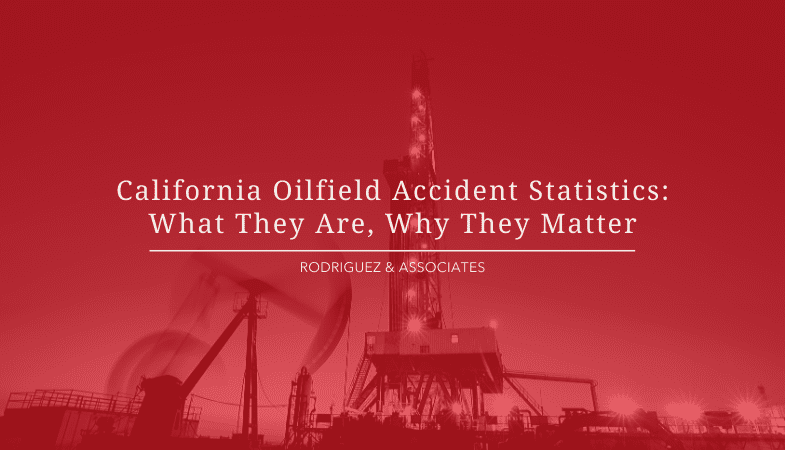As the third-largest oil-producing state in the U.S., California employs hundreds of thousands of individuals for the extraction of oil (and gas) each year. Oil is a vital part of the Golden State’s overall economy, one that contributes billions of dollars to both state and local governments and provides income to countless individuals and families.
The oil industry is also a very dangerous one where workers continually encounter all manner of hazards, from slips and falls to fires and explosions, to name only a few. Some of these dangers are simply inherent to the industry itself. However, a great many of them are more often than not the result of humans — whether employers, employees, or those setting the safety policies — failing to take proper precautions when working in this high-risk industry.
Statistics about accidents in the oil industry abound. It is helpful to know some of them to understand the magnitude of the problem and how the industry can work to avoid some of these injuries and fatalities in the future.
1. The oil and gas industry is one of the most dangerous in the world.
From 2008 through 2017, 1,566 workers died trying to extract oil and gas in the U.S. During the same time, the Occupational Safety and Health Administration (OSHA) cited companies in the extraction industry for 10,873 violations. Workers in this industry are routinely exposed to hazardous fumes and chemicals, work with heavy equipment, and are often at risk of being near fires and explosions. It isn’t hard to see why cutting corners when it comes to safety can lead to serious injury and even death.
2. Numerous hazards can result in fatalities.
According to the Census of Fatal Occupational Injuries, 489 oil and gas extraction workers were killed on the job between 2013 and 2017. The top safety and health hazards that can result in fatalities for these workers are vehicle accidents, being struck by, caught in, or caught between equipment, explosions and fires, falls, being trapped in confined spaces, and exposure to harmful chemicals.
3. The “oil and gas boom” in the U.S. increased fatalities.
The period from 2003 to 2013 is known as the “oil and gas boom,” a time when the industry doubled the size of its workforce and increased drilling by 71 percent. The Center for Disease Control and Prevention estimates that during this time, 1,189 workers died on the job. Top causes of death were transportation incidents, contact with objects and/or equipment, fires or explosions, exposure to harmful chemicals, and falls/slips/trips.
4. The majority of oil workers fatally injured are young.
The National Institute for Occupational Safety and Health notes that of the fatalities among U.S. oil workers between 2015 and 2016, the majority were between the ages of 21 and 30.
Daniel Rodriguez himself worked in the oilfields for years as a roustabout and mechanic. Knowing first-hand how difficult and dangerous the work can be, he and his firm are especially attuned to the rights of workers in this industry when accidents and injuries occur. If you are an individual who has been injured in an oil accident, these statistics can help you determine if your situation warrants contacting an attorney and pursuing a claim.
